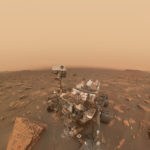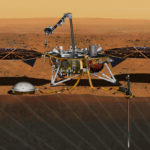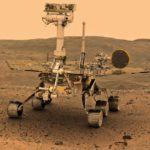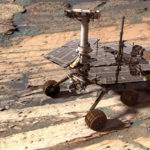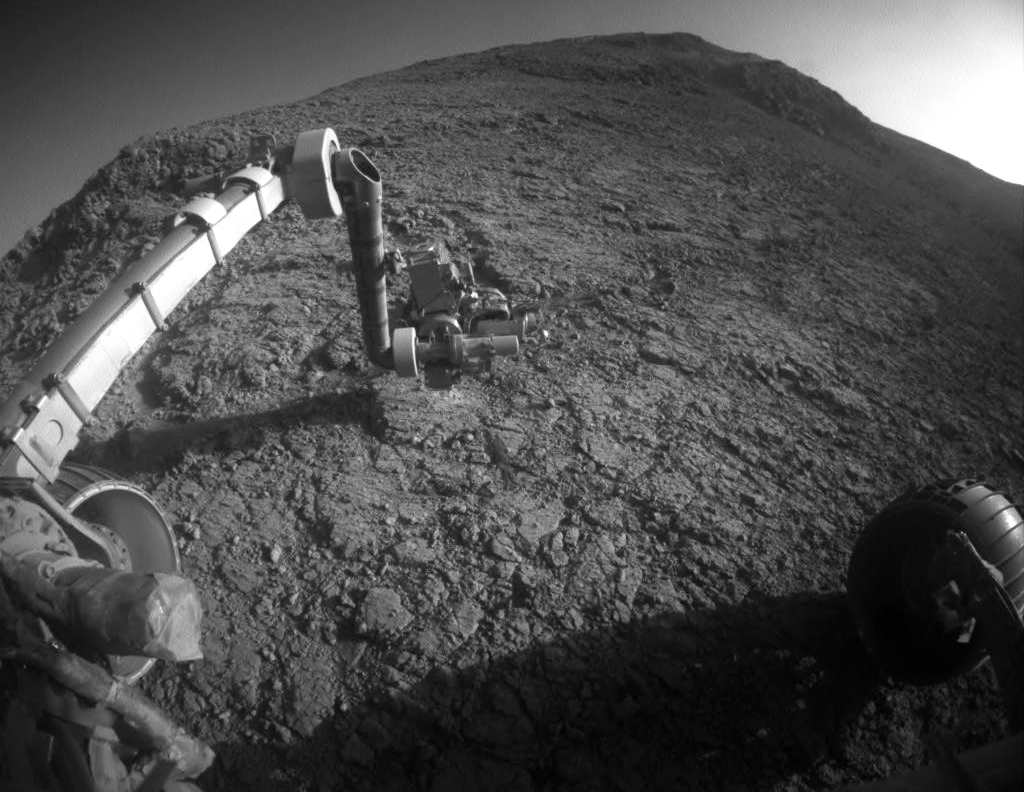
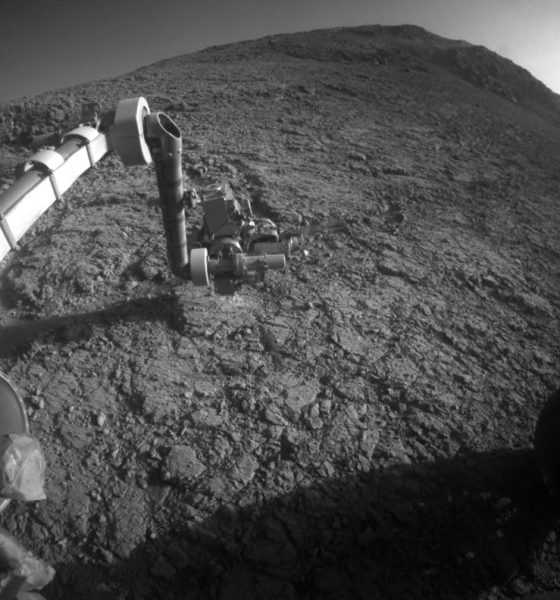
News
NASA officially says goodbye to Mars Opportunity rover lost in massive dust storm
After 15 years roving around our neighboring red planet, NASA announced the end of its Opportunity rover mission on Mars today during a live conference held at 2 pm EST. The rover’s team of scientists spent last night sending a set of commands intended to be the last attempt at waking Opportunity, and this afternoon’s announcement confirmed the final fate of the mission. A planet-wide dust storm in summer of 2018 shut the Martian rover down due to its solar panels being blocked from debris, and the long duration spent without power apparently led to a series of failures which prevented a recovery. The last communication NASA received from Opportunity was on June 10, 2018.
#OppyPhoneHome Update
Tonight, we’ll make our last planned attempts to contact Opportunity. The solar-powered rover last communicated on June 10, 2018, as a planet-wide dust storm swept across Mars.
Want to show the team some love? Send a postcard: https://t.co/eO2SClFcYm pic.twitter.com/trDjRNf65E
— NASA Mars (@NASAMars) February 12, 2019
Over the last few months, while scientists continued to revive Opportunity, hopes were fairly high that communication would be reestablished. The rover’s batteries were in good health prior to the dust storm, and the surface temperature was relatively warm when the storm began. Also, its programming was designed with “fault modes” allowing actions to be taken automatically to maintain the rover’s health. The team at NASA had attempted to talk to Opportunity several times per week once the storm began to clear using the Deep Space Network, an international array of giant radio antennas supporting interplanetary spacecraft missions, and over 600 attempts were made without any response received. The announcement was broadcast live via NASA’s website.
Emotions were high during NASA’s mission end announcement. Associate NASA Administrator Thomas Zurbuchen began the event’s commentary: “I stand here, surrounded by the team…it’s an emotional time,” he began. “Science is a team sport, and that’s what we’re celebrating today.” NASA Administrator Jim Bridenstine noted that while Opportunity stopped communicating around the same time be began his service with the administration, he was still in awe at the achievements the rover and its team were able to achieve throughout their mission. “When this little rover landed, the objective was to have it move 1100 yards and survive for 90 days,” he exclaimed before reiterating the unexpected 15 years the mission eventually lasted. Michael Watkins, Director of NASA’s Jet Propulsion Laboratory commented on the mission’s broader contribution to society: “Spirit and Opportunity energized the public about the spirit of Mars exploration.”
John Callas, project manager of NASA’s Mars Exploration Rover (MER) project, provided some insight about what could have caused Opportunity to shut down for good. Earlier in Opportunity’s mission days, a heater on its robotic arm failed to turn off, draining the rover’s energy in the process. To overcome this issue, the team at NASA designed a deep sleep mode which shut down nearly everything on Opportunity, including the heater. Callas surmised that the dust storm which ended the rover’s mission may have disrupted its sleep cycle, reinstating the power draining issue and preventing recovery. He also described the quality of Opportunity’s batteries and the seasonal reliability of the Martian winds to clean its solar panels as part of the reasons it lasted as long as it did. Finally, Callas had his own farewell comments to add. “Even though it’s a machine, saying goodbye, it’s very hard and very poignant,” he remarked.
- NASAs Mars Curiosity Rover takes a selfie in the middle of a massive storm. [Credit: Seán Doran/Flickr]
- InSight, a NASA mission to put another spacecraft on Mars, is the first mission dedicated to investigating the deep interior of Mars. The findings will advance understanding of how all rocky planets, including Earth, formed and evolved. Source: NASA/JPL-Caltech
NASA’s Opportunity rover (nicknamed “Oppy”) launched on July 7, 2003, aboard a Delta II rocket from Cape Canaveral, Florida. Its primary mission was to search for and characterize rocks and soil while looking for indications of water activity in the Martian past. One of the better-known discoveries made by the rover was the discovery of hematite on the surface, a mineral which typically forms in water. Also found were strips of gypsum in rocks around a crater, indicating that water most likely flowed through the area at one point. The storm which finally ended the rover’s mission was intense and massive, its size is roughly the area of North America and Russia combined with Opportunity in the center.
A month prior to Opportunity’s launch, its twin rover Spirit headed for Mars with a similar mission. Both rovers lasted years longer than their 90-day expected life span, but unfortunately, Spirit’s mission ended before Opportunity’s when it became lodged in soft soil at a site called “Troy”. NASA ended its rescue effort of Spirit in May 2011. Another NASA rover named Curiosity is still crawling the planet, however. Its plutonium-nuclear power source helped it avoid the same fate that came over its predecessor, even sending back a storm-riding selfie during the event that claimed Opportunity.
NASA’s most recent mission to Mars was its InSight lander, a geological science mission sent to study the core of the planet and atmosphere. After arriving at the red planet in late November 2018 with twin CubeSat mission MarCo, it successfully landed without incident and sent a dusty photo back for Earthling enjoyment and arrival confirmation. In the months since it’s treated NASA and the public alike with selfies and the sound of Martian wind. Its instruments have recently been placed on the surface, so new planet data is expected soon.
Up next for the fourth rock from the Sun will be Mars 2020, an advanced rover dedicated to high-priority science missions including the search for habitable conditions and microbes in the ancient past. NASA plans to launch this rover in July 2020.

News
Tesla partners with Lemonade for new insurance program
Tesla recently was offered “almost free” coverage for Full Self-Driving by Lemonade’s Shai Wininger, President and Co-founder, who said it would be “happy to explore insuring Tesla FSD miles for (almost) free.”

Tesla owners in California, Oregon, and Arizona can now use Lemonade Insurance, the firm that recently said it could cover Full Self-Driving miles for “almost free.”
Lemonade, which offered the new service through its app, has three distinct advantages, it says:
- Direct Connection for no telematics device needed
- Better customer service
- Smarter pricing
The company is known for offering unique, fee-based insurance rates through AI, and instead of keeping unclaimed premiums, it offers coverage through a flat free upfront. The leftover funds are donated to charities by its policyholders.
On Thursday, it announced that cars in three states would be able to be connected directly to the car through its smartphone app, enabling easier access to insurance factors through telematics:
Lemonade customers who own @Tesla vehicles in California, Oregon, and Arizona can now connect their cars directly to the Lemonade app! ⚡🚘
Direct connection = no telematics device needed 📵
Better customer experience 💃
Smarter pricing with Lemonade 🧠This is a game-changer… pic.twitter.com/jbabxZWT4t
— Lemonade (@Lemonade_Inc) December 11, 2025
Tesla recently was offered “almost free” coverage for Full Self-Driving by Lemonade’s Shai Wininger, President and Co-founder, who said it would be “happy to explore insuring Tesla FSD miles for (almost) free.”
The strategy would be one of the most unique, as it would provide Tesla drivers with stable, accurate, and consistent insurance rates, while also incentivizing owners to utilize Full Self-Driving for their travel miles.
Tesla Full Self-Driving gets an offer to be insured for ‘almost free’
This would make FSD more cost-effective for owners and contribute to the company’s data collection efforts.
Data also backs Tesla Full Self-Driving’s advantages as a safety net for drivers. Recent figures indicate it was nine times less likely to be in an accident compared to the national average, registering an accident every 6.36 million miles. The NHTSA says a crash occurs approximately every 702,000 miles.
Tesla also offers its own in-house insurance program, which is currently offered in twelve states so far. The company is attempting to enter more areas of the U.S., with recent filings indicating the company wants to enter Florida and offer insurance to drivers in that state.
News
Tesla Model Y gets hefty discounts and more in final sales push
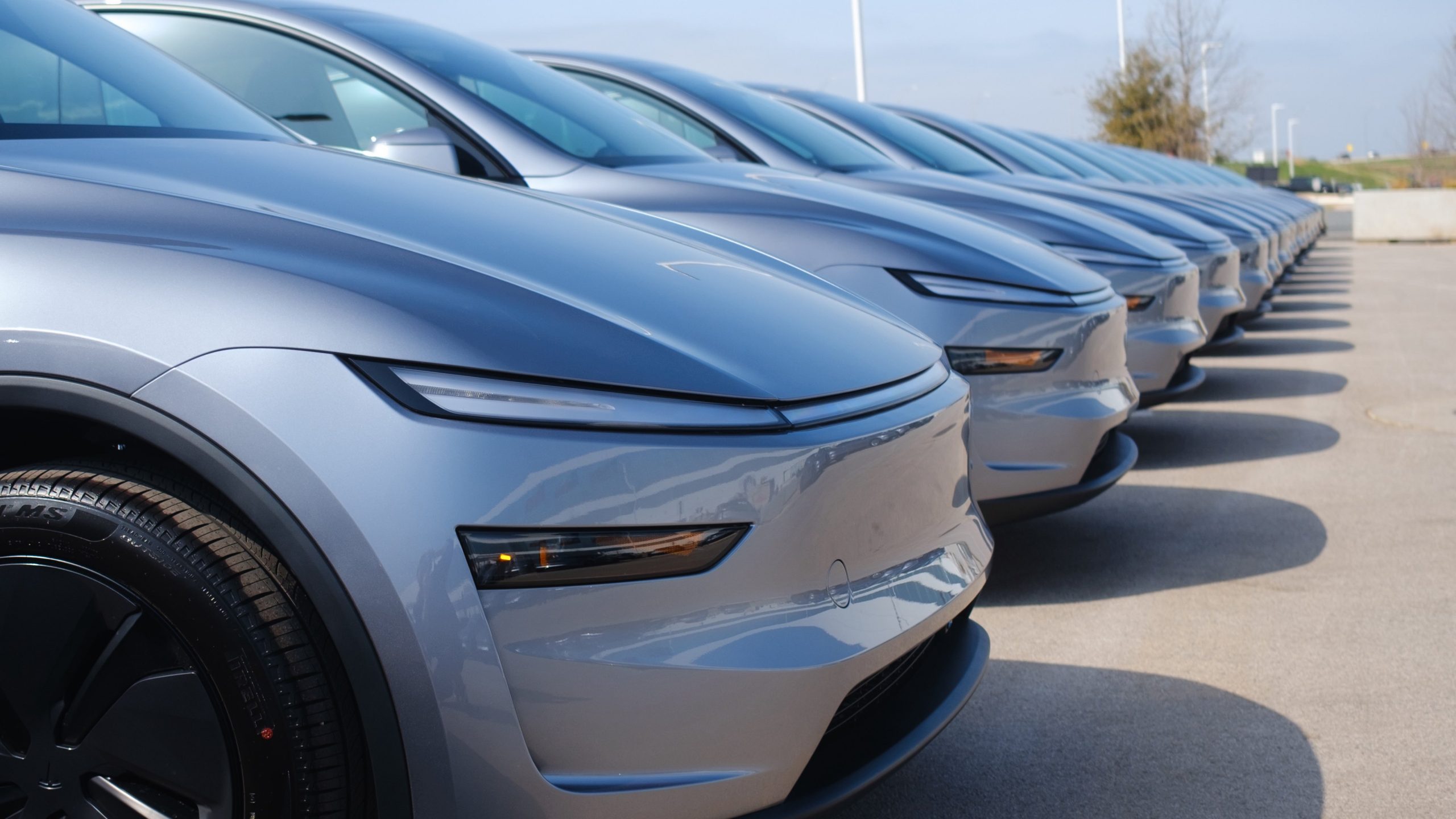
Tesla Model Y configurations are getting hefty discounts and more benefits as the company is in the phase of its final sales push for the year.
Tesla is offering up to $1,500 off new Model Y Standard trims that are available in inventory in the United States. Additionally, Tesla is giving up to $2,000 off the Premium trims of the Model Y. There is also one free upgrade included, such as a paint color or interior color, at no additional charge.
NEWS: Tesla is now offering discounts of up to $1,500 off new Model Y Standard vehicles in U.S. inventory. Discounts of up to $2,000 are also being offered on Model Y Premiums.
These discounts are in addition to the one free upgrade you get (such as Diamond Black paint) on… pic.twitter.com/L0RMtjmtK0
— Sawyer Merritt (@SawyerMerritt) December 10, 2025
Tesla is hoping to bolster a relatively strong performance through the first three quarters of the year, with over 1.2 million cars delivered through the first three quarters.
This is about four percent under what the company reported through the same time period last year, as it was about 75,000 vehicles ahead in 2024.
However, Q3 was the company’s best quarterly performance of all time, and it surged because of the loss of the $7,500 EV tax credit, which was eliminated in September. The imminent removal of the credit led to many buyers flocking to Tesla showrooms to take advantage of the discount, which led to a strong quarter for the company.
2024 was the first year in the 2020s when Tesla did not experience a year-over-year delivery growth, as it saw a 1 percent slide from 2023. The previous years saw huge growth, with the biggest coming from 2020 to 2021, when Tesla had an 87 percent delivery growth.
This year, it is expected to be a second consecutive slide, with a drop of potentially 8 percent, if it manages to deliver 1.65 million cars, which is where Grok projects the automaker to end up.
Tesla will likely return to its annual growth rate in the coming years, but the focus is becoming less about delivery figures and more about autonomy, a major contributor to the company’s valuation. As AI continues to become more refined, Tesla will apply these principles to its Full Self-Driving efforts, as well as the Optimus humanoid robot project.
Will Tesla thrive without the EV tax credit? Five reasons why they might
These discounts should help incentivize some buyers to pull the trigger on a vehicle before the year ends. It will also be interesting to see if the adjusted EV tax credit rules, which allowed deliveries to occur after the September 30 cutoff date, along with these discounts, will have a positive impact.
News
Tesla FSD’s newest model is coming, and it sounds like ‘the last big piece of the puzzle’
“There’s a model that’s an order of magnitude larger that will be deployed in January or February 2026.”

Tesla Full Self-Driving’s newest model is coming very soon, and from what it sounds like, it could be “the last big piece of the puzzle,” as CEO Elon Musk said in late November.
During the xAI Hackathon on Tuesday, Musk was available for a Q&A session, where he revealed some details about Robotaxi and Tesla’s plans for removing Robotaxi Safety Monitors, and some information on a future FSD model.
While he said Full Self-Driving’s unsupervised capability is “pretty much solved,” and confirmed it will remove Safety Monitors in the next three weeks, questions about the company’s ability to give this FSD version to current owners came to mind.
Musk said a new FSD model is coming in about a month or two that will be an order-of-magnitude larger and will include more reasoning and reinforcement learning.
He said:
“There’s a model that’s an order of magnitude larger that will be deployed in January or February 2026. We’re gonna add a lot of reasoning and RL (reinforcement learning). To get to serious scale, Tesla will probably need to build a giant chip fab. To have a few hundred gigawatts of AI chips per year, I don’t see that capability coming online fast enough, so we will probably have to build a fab.”
NEWS: Elon Musk says FSD Unsupervised is “pretty much solved at this point” and that @Tesla will be launching Robotaxis with no safety monitors in about 3 weeks in Austin, Texas. He also teased a new FSD model is coming in about 1-2 months.
“We’re just going through validation… https://t.co/Msne72cgMB pic.twitter.com/i3wfKX3Z0r
— Sawyer Merritt (@SawyerMerritt) December 10, 2025
It rings back to late November when Musk said that v14.3 “is where the last big piece of the puzzle finally lands.”
With the advancements made through Full Self-Driving v14 and v14.2, there seems to be a greater confidence in solving self-driving completely. Musk has also personally said that driver monitoring has been more relaxed, and looking at your phone won’t prompt as many alerts in the latest v14.2.1.
This is another indication that Tesla is getting closer to allowing people to take their eyes off the road completely.
Along with the Robotaxi program’s success, there is evidence that Tesla could be close to solving FSD. However, it is not perfect. We’ve had our own complaints with FSD, and although we feel it is the best ADAS on the market, it is not, in its current form, able to perform everything needed on roads.
But it is close.
That’s why there is some legitimate belief that Tesla could be releasing a version capable of no supervision in the coming months.
All we can say is, we’ll see.
